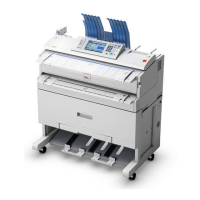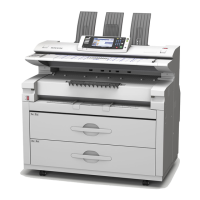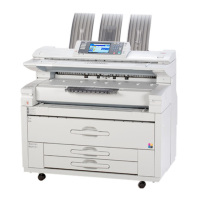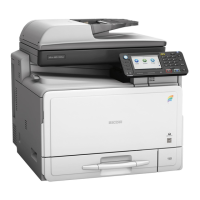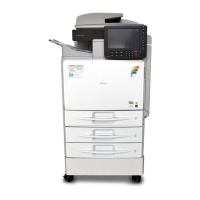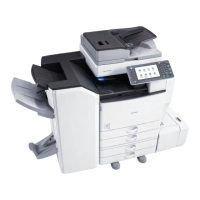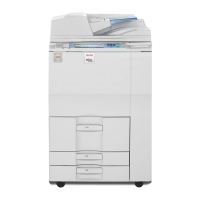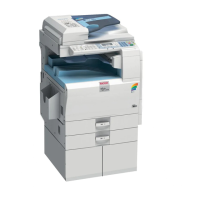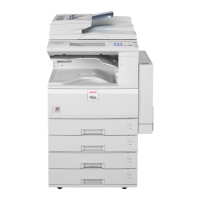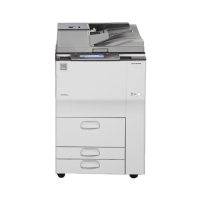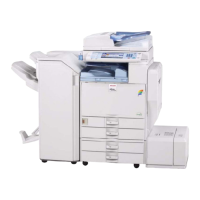Copy Paper
69
3
Important
❒ To prevent faults, do not use any of the following kinds of treated paper:
• Paper for inkjet printers
• Thermal fax paper
• Art paper
• Aluminum foil
• Carbon paper
•Conductive paper
• OHP transparencies for color copying
• Paper with perforated lines
•Tab stock
• Envelopes
❒ Faults can occur if you copy or print onto sides that are already printed. Take
care to copy or print onto unprinted sides only.
Note
❒ To prevent misfeeds, do not use the following kinds of paper:
• Bent, folded, or creased paper
• Torn paper
• Slippery paper
• Perforated paper
• Rough paper
• Thin paper with little stiffness
• Paper with a dusty surface
• Adhesive labels
• OHP transparencies
❒ If you copy or print on to rough grain paper, the output image might be
blurred.
❒ When using non-recommended paper (especially chemically treated paper,
hemmed paper, film), paper jams may occur, paper wrinkle, or output image
deteriorate.
❒ Do not use paper that has already been copied or printed on.
❒ Do not copy or print on both sides of paper.
❒ If you use paper roll that is not marked with a black core, paper jams might
occur when the paper ends.
❒ Do not use paper printed onto with an inkjet printer, as it may become entan-
gled or jammed, which may damage the machine. In the worst event, this
may cause fire, depending on paper and ink type combination.
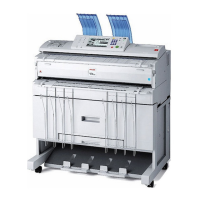
